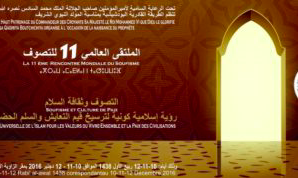
The relation of religion to the culture of war has always been complex, with a struggle inside each religion between the support of state violence, on the one hand, and insistence on non-violence, on the other hand. An overview is provided by Elise Boulding (2000), in her book Cultures of Peace: The Hidden Side of History:
“Every religion then contains two cultures: the culture of violence and war and the culture of peaceableness. The holy war culture calls for mobilization against evil and is easily politicized. The culture of the peaceable garden relies on a sense of the oneness of humankind, often taking the form f intentional communities based on peaceful and cooperative lifeways, sanctuaries for the nonviolent . .”
“The Holy War Culture
The holy war culture is a male warrior culture headed by a patriarchal warrior-god. It demands the subjection of women and other aliens to men, the proto-patriarchs, and to God (or the gods). We see it in the ancient Babylonian epics, in the Iliad, in the Bhagavad Gita, in the Hebrew scriptures used by Jews and Christians, and in the Koran . . ”
“The Peaceable Garden Culture . .
Judaism. Practical utopian-pacifist activism is well-exemplified in that form of Zionism represented by Martin Buber. He saw a Jewish national community in Palestine as a opportunity to create a model political community embodying the highest spiritual values of Judaism while practicing a nonviolent reconciling relationship with Arab brothers and sisters as co-tillers of the same soil . . ”
“Islam. Sufism is the best-known pacifist tradition in Islam, and while the special service of the Sufi is to be a silent witness to God, the Sufi play a special role within the polity, standing over against bureaucracy and formalism . . ”
“Christianity. Mystical and contemplative traditions in Christianity, as in Islam are themselves a source of peace witness, with monks and nuns considered role models for peace in the larger community and prayer interpreted as a form of social action. Turning to the Christian activist tradition, we find the Anabaptists and a strong social action wing of Catholicism . . Their later descendents include Quakers, Mennonites, and Brethren, now known as the historic peace churches.”
Although not mentioned by Boulding, the same can be said for Buddhism which advocates peace in some countries while making war against people of other religions in others such as Sri Lanka and Myanmar.
For articles about peace initiatives carried out by organizations of several different religions working together, click here .
US prelates lead ‘Pilgrimage of Peace’ to Japan seeking abolition of nuclear weapons
Can Pope Francis bring peace to Ukraine?
Pope’s Video: “Let Us Develop A Culture Of Peace”
Let’s “work together for peace”, Nuns, Clergy Appeal after South Sudan Peace Pilgrimage
Martha Ines Romero appointed new Secretary General of Pax Christi
Pope, in Easter message, slams weapons spending in time of pandemic
The Amazon Synod: “Plus Tard Sera Trop Tard”
Conference of European Churches Peace Conference 2019
Vatican’s second conference on nonviolence renews hope for encyclical
Churches in South Sudan promote “three pillars of peace”
Morocco: Madagh hosts eleventh World Meeting of Sufism
Is there an ‘All-American Muslim’?
Harmonizing spirituality and resistance: St Francis Day at Agape